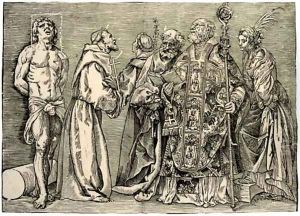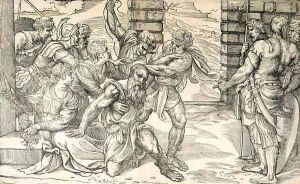Niccol Boldrini Paintings
Niccolò Boldrini was an Italian printmaker known for his woodcuts, active during the Renaissance period. Born around 1510, his exact birthplace remains unclear, but he was most active in Venice, a hub for artists and printmakers during the 16th century. Boldrini is often associated with the Venetian School, which was famous for its vibrant artistic community and innovative printmaking techniques. He worked during a time when the art of woodcut reached new levels of sophistication, partly due to the influence of artists like Titian, with whom Boldrini is believed to have collaborated. Boldrini's works are characterized by their meticulous detail and the use of fine lines, reflecting the influence of the Italian Renaissance's emphasis on harmony, proportion, and beauty. He is particularly noted for his reproductions of paintings by Titian, serving as an intermediary that brought Titian's art to a wider audience through prints. This collaboration highlighted the symbiotic relationship between painters and printmakers during the Renaissance, with printmakers like Boldrini playing a crucial role in disseminating the works of painters. Despite the importance of his work, many details of Boldrini's life and career remain obscure, and he is often overshadowed by the more famous artists of his time. However, his contributions to the development of printmaking and the spread of Renaissance art styles beyond Italy are undeniable. Boldrini's prints continue to be studied and appreciated for their beauty and technical skill, embodying the spirit of a prolific period in the history of art. His death is recorded after 1571, but the exact year and circumstances of his passing are not well documented.

